“Point me to the nearest garden, beach and tea shop”
May is the most liberated of months. It throws off all restraints to burst voluptuous into blossom and leaf. It’s also the month of bank holidays, when we migrate towards green space and coastline, all this exuberance making us eager to get going, too.
Us fair weather gardeners are in a frenzy by now, never mind the backaches. I rejoice in the tender leaves of lovage on my allotment as it makes my favourite seasonal soup – quintessentially English lettuce and lovage, a little old-fashioned and so deserving of a come-back. I wish lovage were better remembered and easier to find, as it still is in France. Its distinctive celery-like taste is so useful in stews, stocks and other dishes where just a few leaves add character and depth.
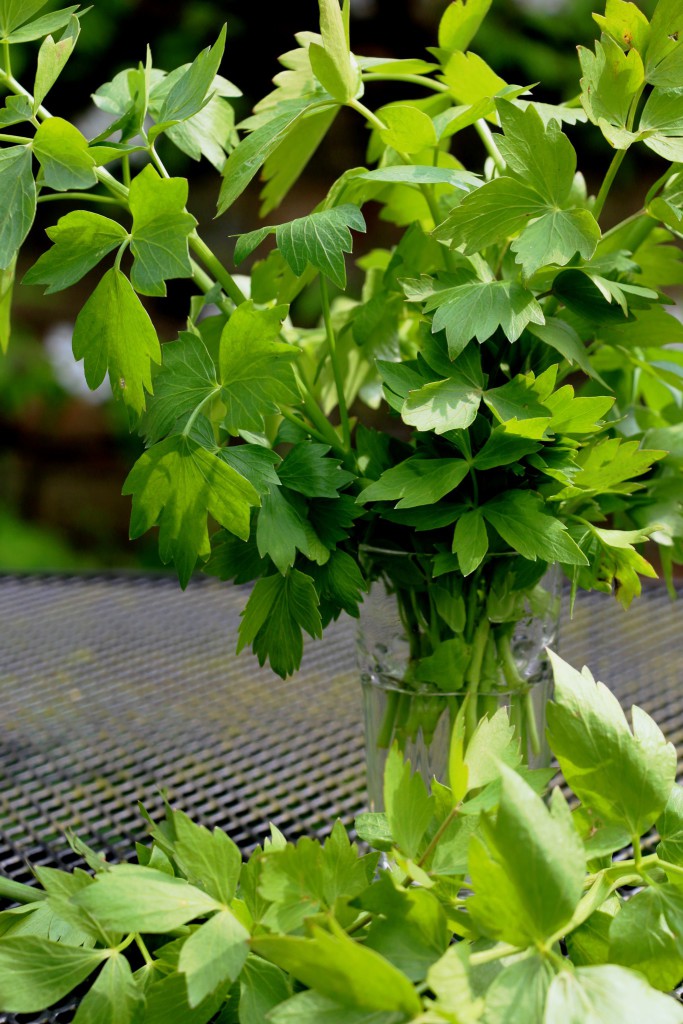 It’s easy to grow, but a big beast, at its best for cooking when the leaves are young, so that may be why it’s less-well-known to home cooks now, though it’s highly valued by chefs who turn it into foams and essences and all manner of things. I hope our market gardeners and supermarkets will help out with a seasonal supply so this treasure can be enjoyed more commonly at home again. Its forceful nature is tamed perfectly with good-tasting lettuce and a bit of cream in this exquisite soup, which is elegant and simple both, as much at home served on a kitchen table as in a Michelin-starred dining room. If you fear that cooking lettuce is just, well, weird, it isn’t really, honest. It’s also great sautéed with peas and pigeon, or served with a joint of beef.
It’s easy to grow, but a big beast, at its best for cooking when the leaves are young, so that may be why it’s less-well-known to home cooks now, though it’s highly valued by chefs who turn it into foams and essences and all manner of things. I hope our market gardeners and supermarkets will help out with a seasonal supply so this treasure can be enjoyed more commonly at home again. Its forceful nature is tamed perfectly with good-tasting lettuce and a bit of cream in this exquisite soup, which is elegant and simple both, as much at home served on a kitchen table as in a Michelin-starred dining room. If you fear that cooking lettuce is just, well, weird, it isn’t really, honest. It’s also great sautéed with peas and pigeon, or served with a joint of beef.
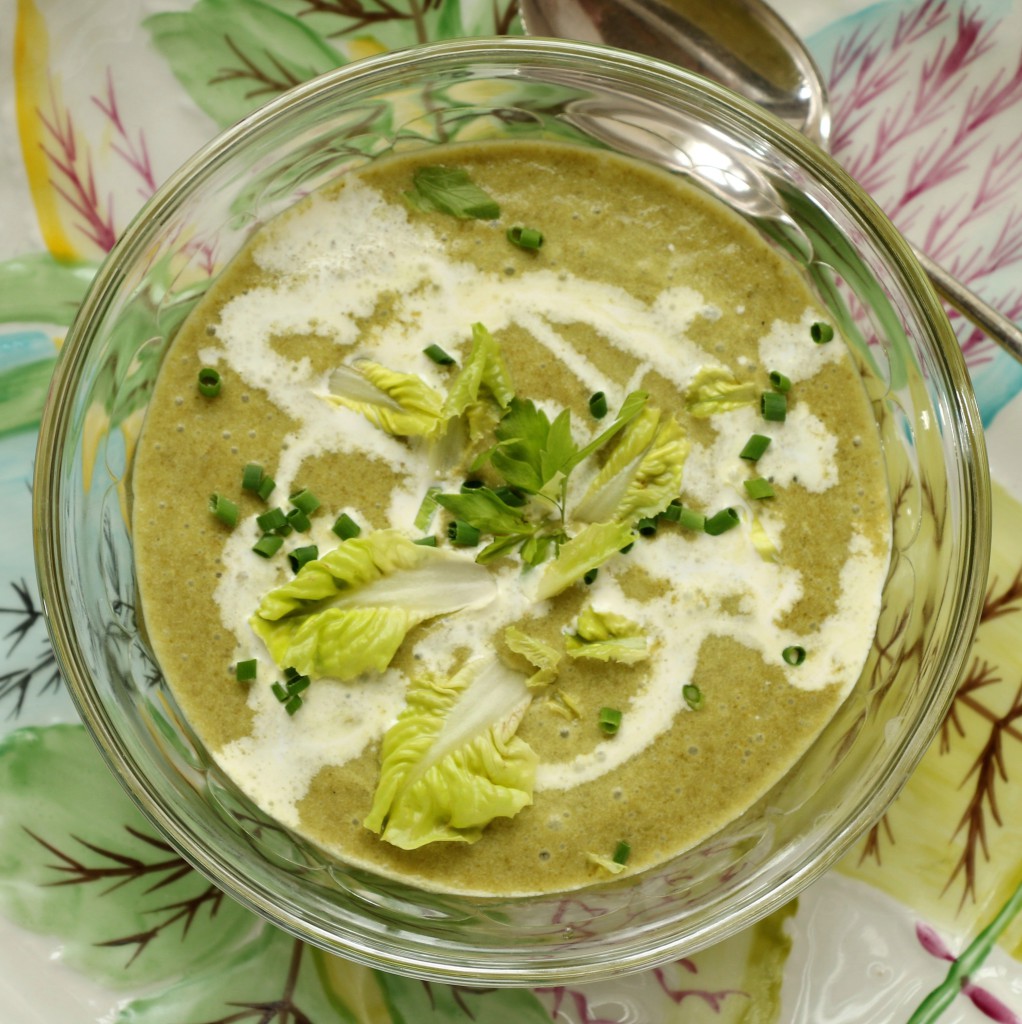 Gardens and cake seem to go together in my mind after all these years of living in England. The ubiquitous tea shop is invariably part of a garden outing, where the satisfaction of the day can depend as much on the quality of the cake as the herbaceous borders. For satisfaction guaranteed, a cake freshly baked at home is hard to beat, and goes some way to motivate the home-gardener through mowing and weeding duties.
Gardens and cake seem to go together in my mind after all these years of living in England. The ubiquitous tea shop is invariably part of a garden outing, where the satisfaction of the day can depend as much on the quality of the cake as the herbaceous borders. For satisfaction guaranteed, a cake freshly baked at home is hard to beat, and goes some way to motivate the home-gardener through mowing and weeding duties.
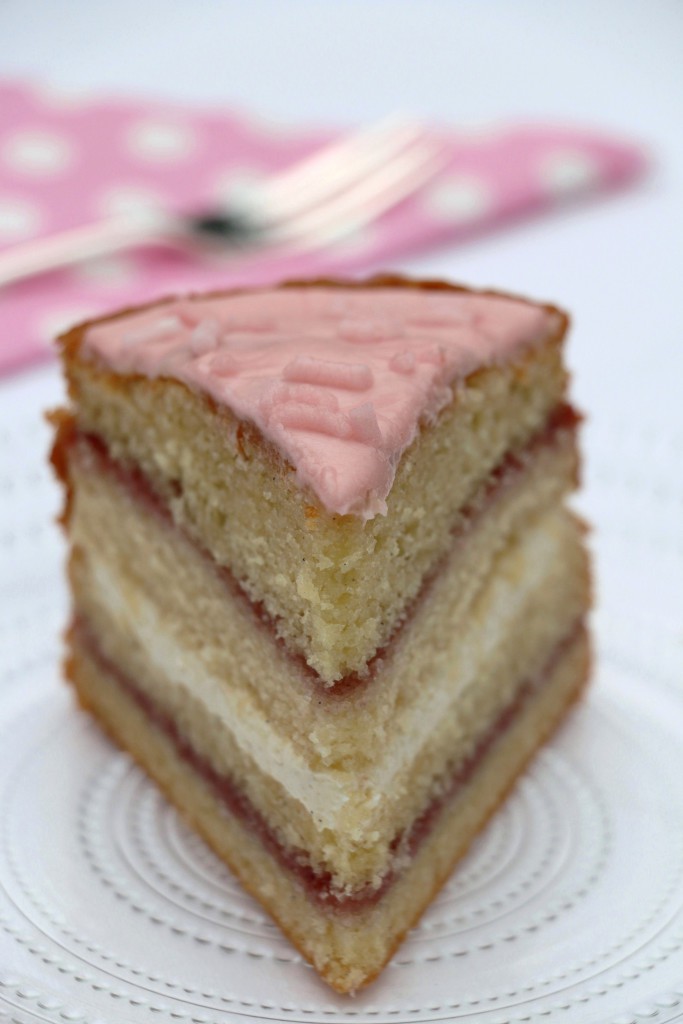 We can have a taste of the coastline whether we make it there or not, with due thanks to our local fishmongers, who this month will be getting in the famous Cromer crabs from the north coast of our sister county, Norfolk. This is the start of this beautifully sweet crab’s peak season, and they are such a treat ready-dressed in their shells with some salad – or if you are feeling in the mood for afternoon tea, made into very special finger sandwiches that happen to go beautifully with lettuce and lovage soup.
We can have a taste of the coastline whether we make it there or not, with due thanks to our local fishmongers, who this month will be getting in the famous Cromer crabs from the north coast of our sister county, Norfolk. This is the start of this beautifully sweet crab’s peak season, and they are such a treat ready-dressed in their shells with some salad – or if you are feeling in the mood for afternoon tea, made into very special finger sandwiches that happen to go beautifully with lettuce and lovage soup.
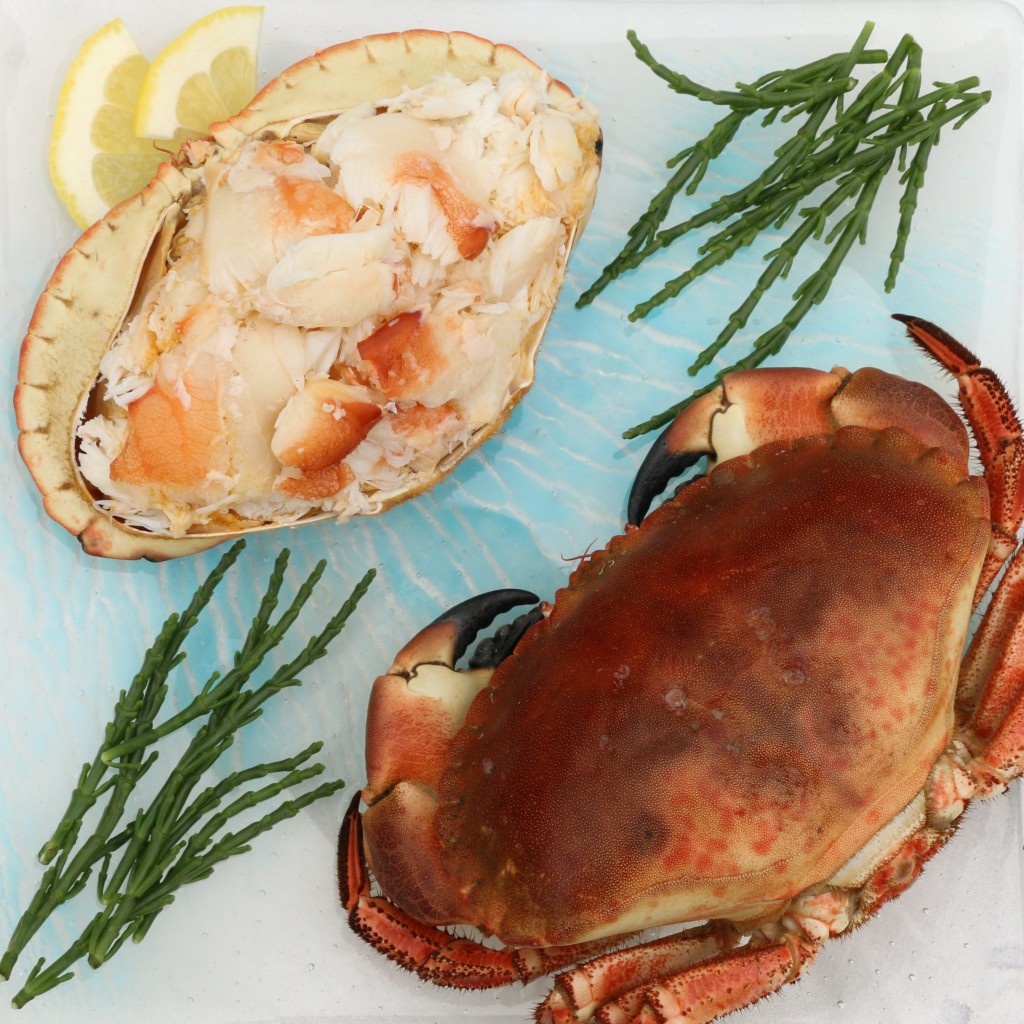 In Cromer itself, there is a community of independently owned small boats who bring in their catch of crab every day of the year, weather permitting, to sell in their own modest fish shops, or wholesale to trade, using crabbing methods pretty much unchanged for generations. (Far fewer crabs are caught in autumn and winter because they move further out and seas are rougher.) As they have been in these waters for centuries, the crabs are caught live in pots marked with a ‘dan’ to signify whose boat they belong to, so only those animals large enough to have bred at least once in their lives are taken onboard, with any smaller being put back live. Fished in such a sustainable way, stocks of the Cromer crab are fairly stable, but as the UK now exports more crab than it sells at home, our chance to taste them may be more at risk.
In Cromer itself, there is a community of independently owned small boats who bring in their catch of crab every day of the year, weather permitting, to sell in their own modest fish shops, or wholesale to trade, using crabbing methods pretty much unchanged for generations. (Far fewer crabs are caught in autumn and winter because they move further out and seas are rougher.) As they have been in these waters for centuries, the crabs are caught live in pots marked with a ‘dan’ to signify whose boat they belong to, so only those animals large enough to have bred at least once in their lives are taken onboard, with any smaller being put back live. Fished in such a sustainable way, stocks of the Cromer crab are fairly stable, but as the UK now exports more crab than it sells at home, our chance to taste them may be more at risk.
Davies Fish Shop on Garden Street in Cromer, two blocks away from the sea, is one of a dwindling number of such small-scale fishing businesses that still provides an immediate connection between the sea and the table. John Davies’s three-man catamaran brings back crab that are in the family’s shop less than 24 hours later, whole, or ready-shelled by the small team of ‘dressers’ who crack each crab, clean it and replace the meat in the same shell it came from in a method known as ‘one-to-one’ (larger crabbing operations may use a production line with the final dressed crab containing meat of different specimens).
There are about 15 crabbing boats out of Cromer now, down in recent years from 50-60, Claire Davies tells me. “Youngsters aren’t interested in carrying on”, she says. “It’s very hard work, and no summer holidays.” Everyone in the shop, though, is cheerful and justly proud of their work and their wonderful product, and they and their fellows in this small traditional industry deserve our gratitude.
This lunch or afternoon tea menu celebrates garden and coast with simple ingredients at their best with minimum interference from the cook. They’re a reminder that ‘simple’ isn’t ordinary, but perfect in itself, needing nothing more to make it special – the work of those who go to sea and till the earth is enough.
Links:
Slow Food in the UK: Cromer Crab
Cromer and Sheringham Crab and Lobster Festival, 21-22 May 2016
RECIPES
Serves 4
Adapted from Rosemary Nunneley’s Sugarswell Secrets, 1997.
Mrs Nunneley ran a farmhouse B&B near Stratford-upon-Avon, where she cooked beautiful meals for her guests using the produce of her garden. This was one of her masterpieces. She was the most genuine and generous of hosts, and these traits were there in her cooking.
If you can’t find lovage, use the inner yellow-green leaves of two heads of celery, plus the small, inner stalks. This soup thickens somewhat on standing and reheats well, so can be made ahead. Let it come back to the boil, taste, re-blend if necessary, and garnish at the last minute.
Ingredients:
- 1 large onion, chopped
- 55g unsalted butter
- 150ml dry white wine
- 570-600ml light chicken or vegetable stock
- 4 large packed handfuls of tasty green lettuce, coarsely chopped (e.g. about 3 round lettuces and 1-2 cos or romaine)
- 1 modest handful young lovage leaves, coarsely chopped OR the inner, yellow-green leaves of two bunches of celery, plus the small, inner ribs
- 250-285ml double cream
- Optional garnishes: a drizzle of cream, the smallest inner leaves of the lettuce, the youngest shoots of lovage or celery leaf, a few chopped chives
Directions:
- In a large saucepan over medium heat, sweat the onion in the butter until translucent, about 10 minutes (include the chopped celery ribs, if using); don’t let it colour. Add the wine and let it briefly boil to burn off the alcohol. Add the stock and bring it to the boil.
- Add the lettuce – the pan may look too full at first, but the leaves will cook down. The liquid should just cover the wilted greenery. Also add three-quarters of the lovage – keep the rest back for now. Lower the heat and simmer until the leaves are tender, about 20 minutes, stirring occasionally. Purée the soup to a smooth consistency using an immersion stick blender (or transfer to a regular blender, and back again to the pan).
- Add the cream in stages, tasting as you go: you may like the flavour with less. Season well. Taste again, and add the remaining lovage leaves if you wish. Let simmer for another ten minutes and correct the seasoning as needed. Re-blend if necessary. Garnish just before serving with a drizzle more cream and a sprinkling of leaves and chives.
For 9-12 finger sandwiches, serving 3-4
The dark meat is mixed with butter to spread on the bread, which contributes great crab flavour while making the texture acceptable to those who aren’t fond of eating the dark meat straight. Large dressed crabs will yield around 100g white meat (small ones give you around 50g).
Ingredients:
- 6-8 thin slices bread (trim off any rounded tops)
- 2 medium-to-large ready-dressed crabs, to yield 160-200g white meat and 60-80g dark meat
- 30g butter, room-temperature
- 1 scant tablespoon mayonnaise for the white meat, and more for the bread
- Squeeze of lemon juice
- Pinch of cayenne pepper OR a dash of Tabasco sauce
- Sea salt and pepper
- Optional: 1 hard-boiled egg if you want to stretch the crab filling
Directions:
- Separate the white meat from the dark meat and carefully pick over both in separate bowls, discarding any shell or cartilage.
- For the white meat: gently flake it, retaining some small chunks. Add a very little lemon juice, salt and pepper, and taste the crab, adding more seasoning if needed. Mix in the mayonnaise, keeping the meat light and flaky, and taste again. At this stage you can add a grated hard-boiled egg if you like. Correct final seasoning.
- Using a fork, mash the brown meat of the crab in its bowl with the softened butter, add a pinch of cayenne or dash of Tabasco to taste, and season with salt and pepper. Butter half the bread slices with this mixture, and use any leftover to spread on the remaining bread slices – or spread them with mayonnaise instead.
- Pile the seasoned white meat onto half the slices of bread, cover with the other slices, and gently press together. Trim off the crusts and rescue any loose crab meat to tuck into the sandwiches. Slice each crustless whole sandwich lengthways to create 3 fingers per round. These sandwiches are best eaten very fresh; keep covered and refrigerated if making a little ahead.
Serves 10-12
Adapted from Alice Waters, The Art of Simple Food (Clarkson Potter, 2007)
This is the most versatile, light and delicious yellow cake I know; it can easily be doubled or halved and used for cupcakes or sheet cakes. It is similar to a classic British sponge, but stays fresh longer. All-butter gives great flavour; separately beaten egg whites and soft ‘00’ flour make it light. This amount makes two 20-cm / 8” layers. I’ve filled them here with jam and sandwiched the two jam-filled layers together with buttercream to create a Victoria-sponge-style showstopper. If you want to ice the sides of the cake as well, double the ingredients for the buttercream.
Use a soft ‘00’ flour suitable for cake and pastry as well as pasta. ‘00’ refers to the fineness of the grind, not to the hardness of the wheat, so check the packet. If it says ‘durum wheat’ it is a higher-gluten pasta flour and you are better off with plain flour, which you can sift with one-quarter cornflour to make a soft-flour substitute.
Ingredients:
For the cake
- 225g unsalted butter, room temperature
- 400g caster sugar
- 4 large eggs, separated
- 390g flour, ideally ‘00’ pastry flour
- ½ teaspoon cooking salt (¼ if using salted butter)
- 4 teaspoons baking powder
- 250ml whole milk, room temperature
- 1 teaspoon vanilla extract
For the filling
- 300-350g jam (e.g., raspberry, cherry, strawberry rose)
For the icing
- 115g unsalted butter, room temperature
- 85g icing sugar
- ½ teaspoon vanilla extract or lemon juice
- Juice of 2-3 strawberries mashed through a strainer OR 1 teaspoon strained jam
Directions:
- Heat the oven to 180C/gas mark 4; butter and flour two 20cm cake tins.
- Cream the butter and sugar for about 5-8 minutes until very light and fluffy. Add the egg yolks one at a time, beating just until incorporated. Sift together the dry ingredients, and on slow speed add one-third to the creamed mixture, mixing just until incorporated. Slowly add half the milk and all the vanilla, and mix well. Add another third of dry ingredients and mix. Add the last half of the milk, mix it in, and then add the remaining dry ingredients. Mix just until the batter is smooth (too much will toughen the cake).
- Beat the egg whites on medium speed until they reach soft peaks (the foam will take on volume but flop a bit on the beaters). Gently fold the whites into the cake batter one third at a time until no lumps of white remain, taking care not to deflate the mixture.
- Divide the batter between the two prepared cake tins and bake for 20 minutes. Rotate in the oven for even browning and continue baking for another 10-20 minutes, just until a skewer inserted into the centre come out clean, the tops are lightly golden and spring back when gently pressed, and the layers have just begun to come away from the sides of the pan. Don’t overbake or the cake will be dry. Let cool in the tins for 10 minutes and then turn out onto racks to cool completely.
- To fill and ice: Combine all ingredients for the buttercream except the strawberry juice or jam, and beat until smooth. Divide into two bowls and colour the half for the top of the cake with the strained jam or strawberry juice. Split the two cooled cake layers in the middle and fill each one with jam, to make two jam-filled layers. Place one of the jam-filled layers onto a serving plate, flat side up. Cover it with the plain buttercream. Place the other jam-filled layer over the buttercream, rounded side up, so you have a four-layer cake. Ice it on top with the coloured buttercream. Store the cake airtight. It keeps for three to four days. You can also freeze the unfilled cake layers to assemble the day you serve.
[This article was one of a series of Crumbs on the Table monthly food columns published in Weekend, the Saturday supplement of the Cambridge News.]
For other afternoon tea recipes and stories on Crumbs on the Table, see:
Planning an afternoon tea menu
Lemon elderflower drizzle cake
 Strawberry custard cake (Fraisier)
Strawberry custard cake (Fraisier)
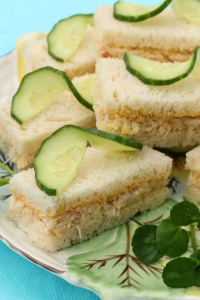
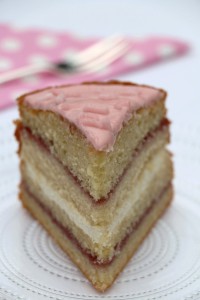
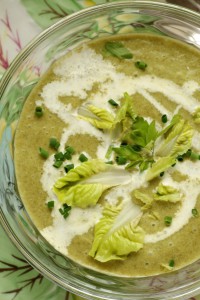
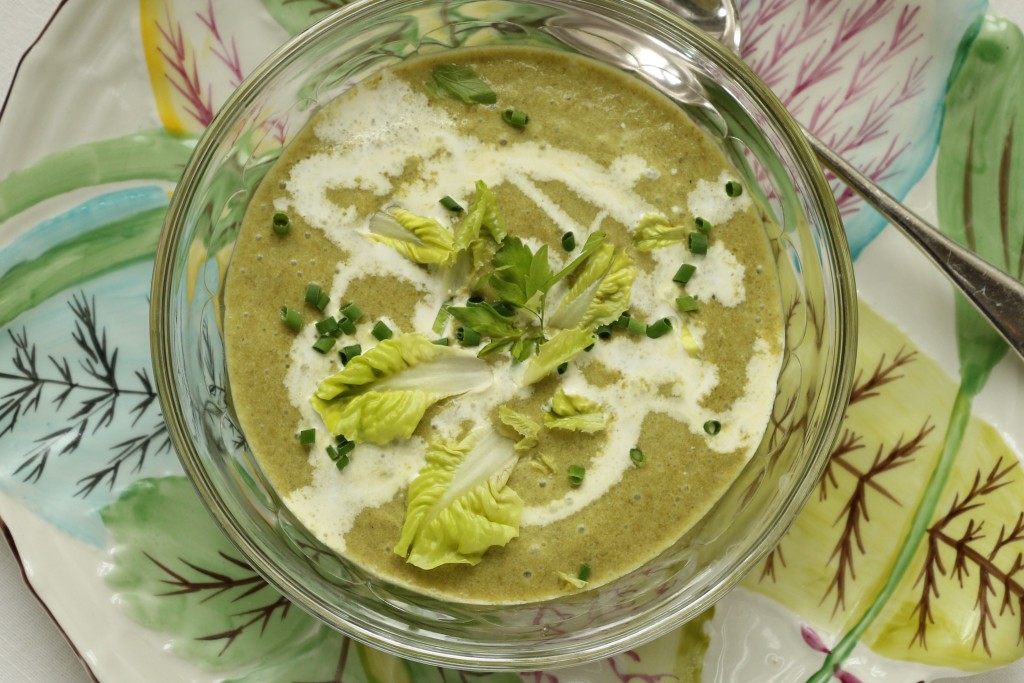
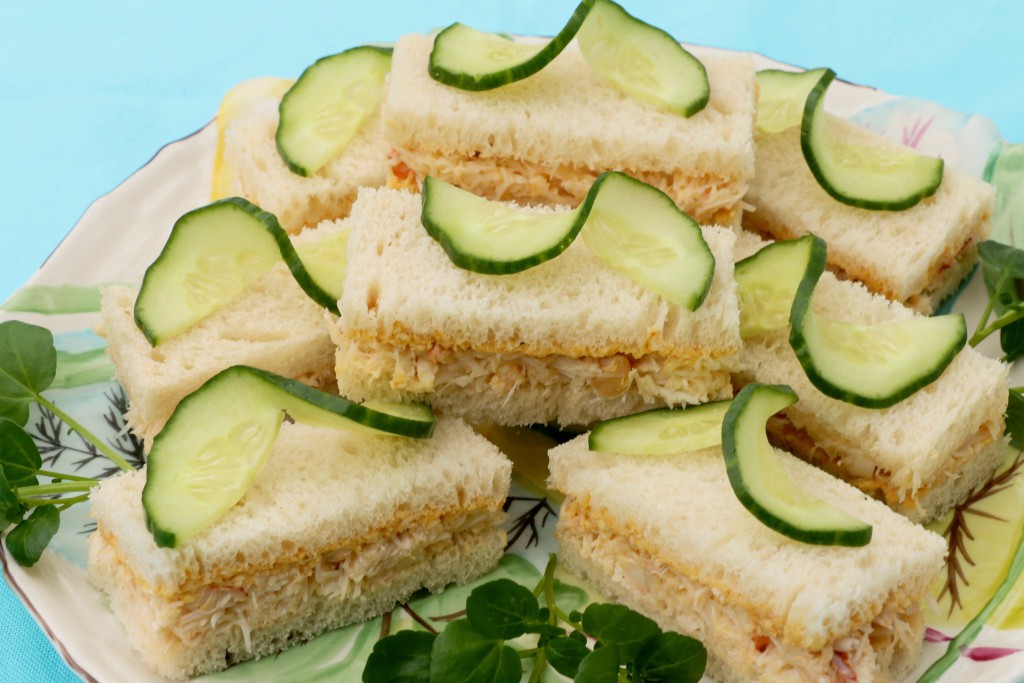
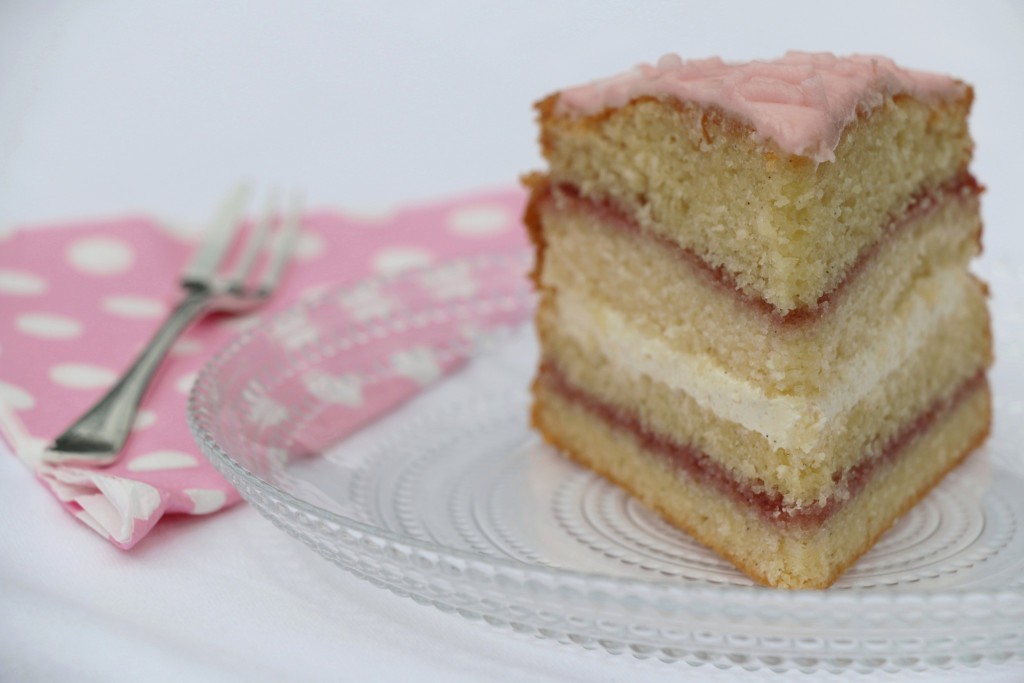
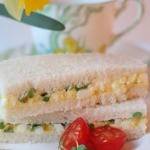
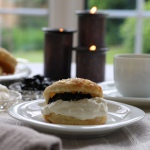
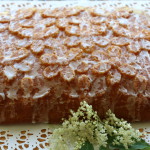
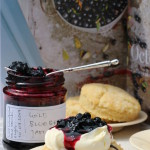 Wild blueberry jam
Wild blueberry jam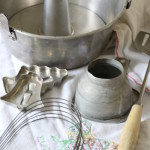


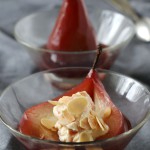
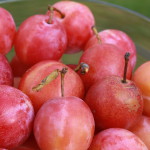
 Tour D’Argent: a remembrance of things past at today’s prices
Tour D’Argent: a remembrance of things past at today’s prices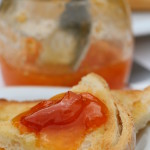 Apricots, les abricots
Apricots, les abricots I used to cook in a piggery
I used to cook in a piggery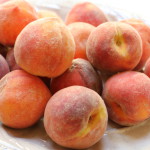




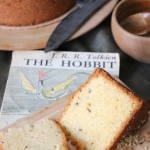 Seed cake and story
Seed cake and story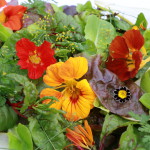




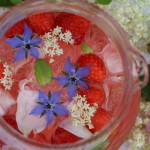
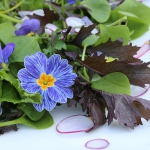

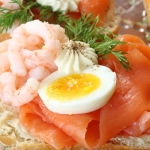


 Easter is late this year
Easter is late this year
Yummy! Join you for tea!
We’ll do it! Lxx